The Transparency in Coverage Rule and the No Surprises Act, set to take effect on January 1, 2022, will have a momentous impact on employer-sponsored health insurance, in terms of cost, as well as consumer knowledge. These rules will impact millennials, in particular, because they speak to one of the key characteristics of this demographic—the millennials’ push for a direct, digital-first experience that aligns with the group’s desire to be more proactive and health conscious.
I, as a millennial, couldn’t agree more. I will not just accept the status-quo. I take healthcare into my own hands and do the necessary research to ensure I’m receiving high-quality, low-cost care. My peers and I are twice as likely as seniors and boomers to request cost estimates before undergoing treatment, and I’m not afraid to ask my primary care physician, who I view as a gatekeeper, to refer me to cost-effective care. Beyond cost, I value convenience, availability, and accessibility in service providers, and I find too many providers in the current healthcare system to be lacking in those regards.
The Rule and Act mentioned above will enable the user-friendly, price conscious experience in healthcare that my generation has grown accustomed to in other industries.
To provide a little background, the Transparency in Coverage Rule will create true price transparency. It’s a three-phase effort, with the first phase beginning January 1, 2022. In phase one, employers will be required to publish three, machine-readable files. The following information will be included:
- negotiated rates for all covered items and services between the plan or issuer and in- network providers.
- historical payments to, and billed charges from, out-of-network providers
- in-network negotiated rates and historical net prices for all covered prescription drugs by plan or issuer at the pharmacy location
In phase two, employers will be required to provide a cost-comparison self-service tool and make cost-sharing information available for 500 items and services. Then, in phase three, the same tool must reveal the prices of all healthcare services, procedures, and prescription drugs.
From a millennial perspective, this is what we expect. It’s long overdue! As the largest generation in the U.S., removing the confusion and complexity from the antiquated healthcare system is not just our desire, but our demand. We have less tolerance for needless red tape and far less tolerance for systems that seek to keep the truth hidden. From ordering groceries to booking travel, a simple, seamless, straightforward, digital process is what we’ve grown accustomed to in our daily lives. The Transparency in Coverage Rule will enable healthcare consumers to be pragmatic in their healthcare choices by identifying and navigating towards high-quality, low-cost, uber-convenient providers.
The No Surprises Act, also set to take effect on January 1, 2022, speaks to the characteristics of the millennial generation, as well. First and foremost, The Act contains key provisions to protect consumers from the cost of unanticipated out-of-network bills. Surprise bills, particularly those arising from emergency care, lead the list of affordability concerns for healthcare consumers. As a result of this Act, it will be illegal for providers to bill patients for more than the in-network cost-sharing due under patients’ insurance in almost all scenarios where surprise out-of-network bills arise, with the notable exception of ground ambulance transport. Health plans must treat these out-of-network services as if they were in-network when calculating patient cost-sharing.
Additionally, for out-of-network emergency services and air ambulance services, barring surprise out-of-network billing creates a need for some sort of price support because these providers are required to treat any patient regardless of ability to pay and thus have no other leverage to draw on in negotiations with payers. The law’s new arbitration process fills that role.
Most importantly, patients will no longer be exposed to large, surprise out-of-network bills when receiving emergency care or elective procedures or being transported by an air ambulance. Eliminating that perverse leverage to surprise bill patients has the potential to reduce costs in certain specialties—and, as a result, consumers’ premiums.
And finally, the No Surprises Act includes a provision that health plans must provide an advanced explanation of benefits. This means that, for scheduled services, healthcare consumers can request advanced information about how services will be covered before they are provided, with a good faith cost-estimate of what the plan will pay and what the patient’s out-of-pocket exposure may be. The two efforts above meaningfully challenge the status-quo, prompt significant change, drive a digital-first experience, and push health and wealth consciousness in healthcare to the forefront. These are all characteristics wholly compatible with the millennial generation. They help level the playing field and supports sustainable and, most importantly, ethical business practices. As a result of the Transparency in Coverage Rule and the No Surprises Act, millennials will no longer turn down healthcare as a result of mistrust and cost. Convenience, affordability, and accessibility will continue to increase because of these efforts, and meaningful change will be realized for all healthcare consumers.
-Matthew McCormick, Director, Partner Sales
